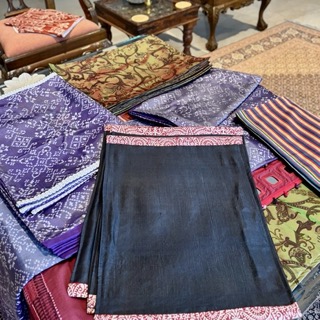
Heading 1
Heading 2
Heading 3
Heading 4
Heading 5
Heading 6
Lorem ipsum dolor sit amet, consectetur adipiscing elit, sed do eiusmod tempor incididunt ut labore et dolore magna aliqua. Ut enim ad minim veniam, quis nostrud exercitation ullamco laboris nisi ut aliquip ex ea commodo consequat. Duis aute irure dolor in reprehenderit in voluptate velit esse cillum dolore eu fugiat nulla pariatur.
Block quote
Ordered list
- Item 1
- Item 2
- Item 3
Unordered list
- Item A
- Item B
- Item C
Bold text
Emphasis
Superscript
Subscript
The word circular has many lives. At one level, it evokes the familiar shape of a circle. In mathematics, it inspires theories of infinity and continuity. In climate action, it represents a radical shift away from “take - make - waste” toward systems where materials loop endlessly, rather than end in landfills. And in life, it can mean rediscovering purpose, reinventing routines, and giving time a new rhythm after years of work.
Today, I want to weave these threads together by sharing the story of my friend, Mrs. Shubhra Bhatnagar.
A New Chapter, A New Circle
After stepping into semi-retirement, Shubhra has found joy in clearing out her wardrobes. But instead of discarding old silks, she has given them a second life. Worn-out sarees have been transformed into elegant silk runners - unique, handcrafted pieces that are now perfect gifts.
This is not just personal reinvention; it’s also an act of circularity. It’s a reminder that sustainability does not only live in boardrooms and climate conferences. It thrives in homes, in creative acts of extending the life of what we already have.
Circularity by the Numbers
The climate story behind her craft is powerful. Let’s unpack it with available data:
- The footprint of silk: According to peer-reviewed Indian life-cycle assessments, the production of silk fabric carries ~80.9 kg CO₂e per kilogram of fabric. A typical saree (around 5 meters, weighing ~0.75 kg) thus embodies ~61 kg CO₂e - from cocoon rearing to weaving.
- Repurposing vs. wasting: By upcycling sarees into runners with only 0–1% wastage (as is in this case), nearly 99 - 100% of the material’s footprint is preserved in productive use.
- Shubhra’s project: If one sari makes 3 runners, then 50 runners would save approximately 17 sarees’ worth of fabric from being wasted.
- That equals ~1,037 kg CO₂e avoided - over one metric tonne of emissions.
- This does not even count the landfill CO₂e and methane avoided by keeping natural protein fibers like silk out of disposal streams.
- Confidence in data: These numbers come with a >40% confidence band, since silk LCAs are fewer in number and localised to India’s sericulture hubs. Still, even at the lowest bound, the carbon savings are significant - easily hundreds of kilograms of CO₂e avoided.
More than Carbon
Materials we extract are meant to last. Treating them with respect - by reusing, repurposing, or gifting them a new life - keeps their value alive. Circularity also brings joy. The runners carry with them the memories of the old sarees and the new stories they will witness around festive dining tables.
Shubhra’s example shows that every action counts. From home to community, from the workplace to public platforms, circularity is not just a policy term - it’s a way of living.
A Call to Action
This festive season, before buying something new, pause. Look around your cupboards, wardrobes, and shelves. Could you breathe new life into something you already own? Could you extend the circle, like Shubhra did, and turn it into something beautiful, useful, and meaningful?
Every runner, every reused fabric, every avoided landfill trip adds up. From sunset to sunrise, circularity is good for all.
Start your own circular journey today. Repurpose, repair, and reinvent - at home, in your community, and in your workplace. Your creativity can save carbon, cut waste, and carry forward memories into new forms.